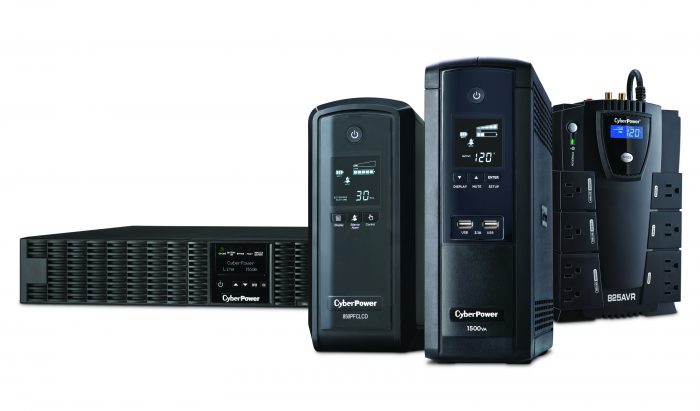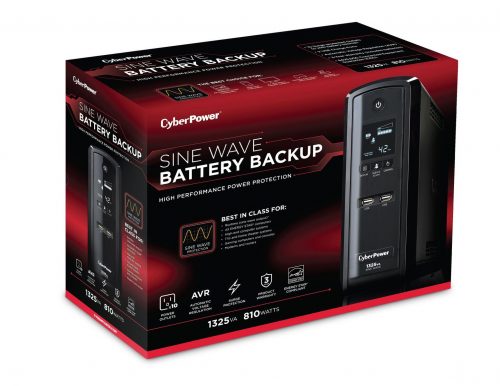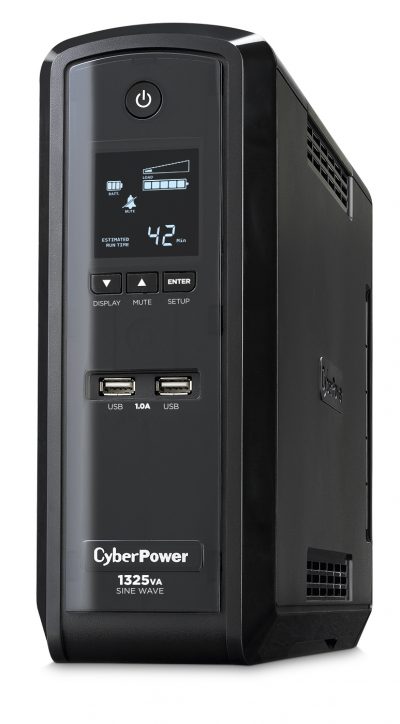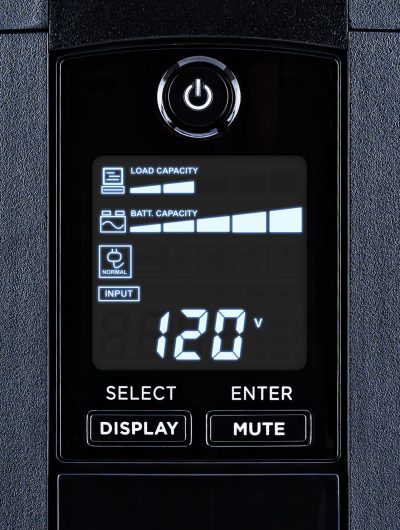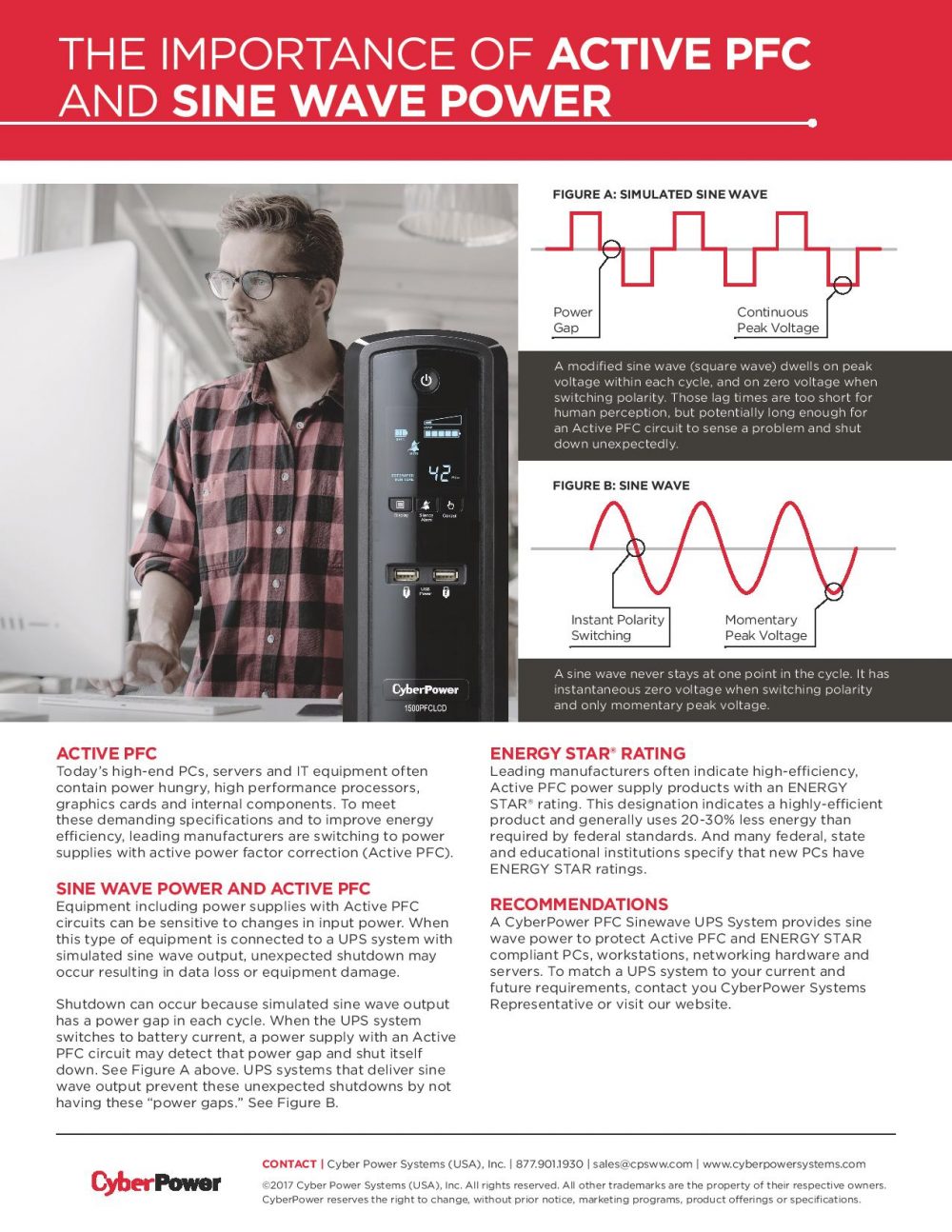No one planned to confuse you, but a mumbo-jumbo of terms can make it really hard to know when you’re making smart choices about backup power systems. They all sound good, but which is right for you?
Skip all the Geek-speak for now. Instead, think of the different kinds of backup products as different breeds of dogs. If you can tell a Chihuahua from a Greyhound, this is almost as easy.
Body parts
Some dogs have long legs, some short, always because of a choice by the breeder. Some are great swimmers, others not so much. Some are good at herding, some at guarding. We don’t often think of dogs in terms of their body parts, but it isn’t crazy: Are the jaws weak or strong? Are the legs built for strength, for speed, for digging, for swimming or for something else? Are the paws bigger or smaller than normal? What role do the ears play, or the nature of their fur? These are among the things that identify a breed and what it’s best cut out to do.
Backup power parts can be just as simple. It needs a battery. It needs some way to charge that battery. And it needs a way for the battery to produce the electric power your gear needs. Simpler still: power comes in, power gets stored and power goes out.
Every breed is built for speed
No one would be very happy with a backup power system that takes too long to kick in. That might be OK for a generator, but people expect backup power products to keep their gear running as if the power never failed at all.
What if it was you in charge? When the lights go out, how long would it take you to hit the switch that lets a battery backup take over?
The reasons speed is important can get a little quirky, as we’ll soon explain. You can even look forward to learning about a breed for which that speed is zero.
Stamina, and the difference between the loner and the team
You may have seen pictures of muscular working dogs, trained to pull small wagons or sleds; we’ve all seen pictures of teams pulling dog sleds. Which do you think can carry a heavier load? Which do you think can carry any given load a greater distance?
Some battery backups are built as solo players, loners, one-piece units that do it all. Others let you add companion boxes with more batteries. (Note that more batteries don’t let a backup system handle a bigger load, but they do let it handle a load for a longer time).
So, stamina here refers to endurance, not raw power. That’s next.
Muscularity and strength
A bulldog is a stocky, wide-track animal, built low to the ground and was once used in a cruel sport where an 80-pound dog would pull a bull weighing almost a ton to the ground. They were at that time bred for the ability to pugnaciously deliver a great deal of power.
As you already guessed, the same is true for backup power. Each product has its rated power front and center wherever you see information about it.
Adaptability
What kind of dog is a German Shepherd? A herding dog? A police dog? A war dog? A companion dog? It’s an intelligent breed, and that intelligence has allowed it to adapt to fulfill several roles, depending on the current need.
There are sometimes special roles that some kinds of backup power products can handle better than others. Knowing those can help protect you from bad decisions; we won’t leave you wondering.
So, where are we?
A lot of the same questions you might ask about dogs can help you make smart choices about backup power systems:
- How powerful does it need to be?
- How long must it keep going?
- How quickly does it have to respond?
- What extra skills does it need to have?
- Does it play well with other gear or is that a special concern?
Power comes in, power gets stored and power goes out
That simple description fits everything in the backup power universe. Is it an oversimplification?
Don’t worry about that for now – an oversimplification here is a lot easier to handle than if we were to make things overly complicated. Besides, when you start simply, the variations turn out not to be all that complicated. For example:
Power comes in. It comes from a socket on the wall, or sometimes an electrician will permanently wire it in. If it plugs in, do the plug and the socket get along with each other? It’s no more complicated than powering up an air conditioner, an electric clothes dryer or an electric oven. In the US, you may need to plug into a 20-Amp connection instead of the more commonplace 15-Amp sockets. For really big systems, you may need to plug into a 230 Volt socket instead of a 120 Volt socket. These are things that determine how much power can come in; we’ll touch on how much power you need in a moment.
Power gets stored. The size and weight of a backup system’s batteries tend to get bigger as the need for battery capacity grows. (Sometimes, more advanced batteries have more “oomph per teaspoonful”, usually accompanying a higher price tag). So how much capacity do those batteries need? That depends on how much power the backup system needs to feed, and for how long. We’ll include some tips for figuring that out momentarily.
Power goes out. The batteries power an electronic version of a generator, creating power to replace the missing power at the wall plug. Some backup products produce power just like utility power, while some produce a less precise approximation; we’ll explain that, too. As your backup replaces the power going to your gear, it’s a really good idea for it to be able to deliver even more power than the gear really uses, partly because their need for power may grow but mostly because it lets them deliver that power longer.
Can we chat a bit about human nature? A guy we know says, “You never fail to outgrow your stuff”. So if you get a backup power system today that handles exactly the amount of power that your computer, for example, uses today, what can go wrong?
Maybe the computer is new and you have no immediate plans to replace it with something more powerful. Maybe you’ll never plug any power-hungry gear into its USB ports and boost the amount of power it uses as a result. Maybe you’ll never be tempted to plug in a printer just to get your work onto paper even though the power is still out. But still, maybe you forgot something…
Do you need your computer to be connected to the Internet? When the power goes out, are your modem and router and access point still going to be able to connect you? Are they in the same place as your computer? Could you plug them all into the same backup power system?
Here are some tricks the old timers recommend:
- When you decide what capacity of backup system to get, total the Wattage of everything you would ever plug into it and consider half again that number the right Wattage to buy.
- Be careful about the VA (Volt-Amp) number listed with the product; the actual Wattage is only about 60% of that number. So, when you know how many Watts, divide that number by 3 then multiply the result times 5 to figure out what the VA rating should be.
- You get more than twice as much runtime when the power being used is half of the backup system’s rating, so getting a bigger capacity than just your calculations would indicate comes with benefits.
- Divide and conquer – if you use one backup system on your computer, another on your modem and router, another on your gaming console and yet another on your music system, every one of them can run longer.
So much for how much; how about how long?
One mistake people often make about backup power has to do with why it’s there.
It isn’t there to let you just keep working; it’s there to let you do an orderly shutdown of your gear. It’s there to give your computer a chance at a soft landing instead of a crash.
Do you have a generator? When power fails, many generators take 2-5 minutes to start up, stabilize and take over the juice duties. Do you need to back up that backup? Absolutely. Any time you take power away from sensitive electronics for more than a tiny sliver of a second, you risk them crashing. A battery backup can cover the few minutes of gap while waiting for generator power to appear.
Does it need to be an outage for a backup to help?
There are some often-overlooked bonus deeds that just about all backup power products also perform, like making sure your gear sees the right Voltage even when the power line isn’t delivering it.
When it’s too low, it’s called a brown-out. When it’s too high, well, you may want to add replacement light bulbs to your shopping list.
Simple battery backup units treat those the same way they do a power failure, kicking in to deliver the right Voltage to your gear; no matter why they kick in, you can start the count-down on how long they can keep running until they get drained and need to be recharged
We mentioned dogs that adapt; some backups can, too. When the utility Voltage gets out of whack, they have extra circuitry that automatically adjusts to it, so they can still deliver the Voltage your gear wants to see without using the battery.
One very special kind of backup system – the most intensely perfected approach to powering and protecting your gear – is never off. It is always electronically generating the clean, precise power that keeps even the most delicate and finicky equipment happy. It is always powering that from its batteries. As long as there’s power coming to it, even if it’s higher or lower than it should be, those batteries stay charged.
You’re keeping up pretty well, so far. Our toughest explanation is just ahead, then we can ease back into the fun stuff and even give you a cheat sheet for when you want to make backup system choices.
Roller coaster versus bumpy blocks
Think about the smooth up and down curves of a roller coaster; it’s very close to the shape of a sine wave – like you see in old science fiction movies. If you can remember trigonometry class, you may know that a sine wave has something to do with circles. Utility power looks like a sine wave because it’s produced when a generator spins. A sine wave is a line that goes up and down smoothly, with no abrupt jumps.
Some backup products generate true sine wave power; some generate a much bumpier line. It’s a Bizarro shape but it does hit the same Voltages as a sine wave about 600 times a second. That’s OK for powering some kinds of gear, actually bad for others.
You’re already getting pretty backup-savvy without dealing with the jargon. Here’s our cheat-sheet of jargon terms – surprise yourself with how well you now understand them.
A field guide to backup power Geek-speak
Here we go!
UPS
No, we’re not talking about the brown delivery trucks. It’s an acronym for uninterruptible power supply or uninterruptible power system, which are 10-syllable ways of saying battery backup. Power coming in from the wall plug may get interrupted but power going out to your gear won’t be.
Standby
The simplest backup power products are not always on; they’re almost always off, keeping tabs on the power coming out of the wall and waiting, on standby, to switch on immediately, or so close to it that some gear may never see the power drop.
AVR
Another acronym, this time standing for Automatic Voltage Regulation. We talked about the tricky way some backups can adapt to too-high or too-low utility Voltage at the wall plug, self-adjusting to deliver the right Voltage to your gear. AVR is one of the technical terms for that.
Line-interactive
This is the other term for AVR, so named because the backup power system is interacting with the power line to correct its flawed Voltage feed.
Sine Wave
Also, sinewave (one word) – this is that smooth rollercoaster shape you would see if you were to view the power line on an oscilloscope – but be careful here. Look for a modifier that suggest purity, like True Sinewave or Natural Sinewave – because there’s another kind.
Simulated Sinewave
That bumpy-block stepped wave that many backup power systems produce has many similar names, like simulated sinewave or synthesized sinewave. We can only guide you a little here: it’s just fine for some kinds of gear and not at all good for other kinds. Ask.
Online UPS
We mentioned a kind of backup power that is always on, always electronically generating the power that goes to your gear. The tech terms for it are continuous online (or just online) because it’s always switched in and never on standby – and double conversion, because it converts wall power to battery charging current while always converting battery current into power for your gear.
An acronym for liquid crystal display; the term helps identify which products have front-panel informational displays; many do and some don’t.
Power supply
Inside the gear that you plug in, a power supply is the first part of its circuitry; it changes the power at the plug into the kinds and levels of power the rest of its circuitry needs.
Active PFC power supply
The PFC acronym stands for Power Factor Correction. (ENERGY STAR rated computers use Active PFC). Active PFC power supplies can be very sensitive to even the briefest absence of power, as they are likely to encounter with those stepped simulated sinewave backups. If your gear says PFC or ENERGY STAR, you’ll want a true sinewave backup.
That’s it – not as hard as you feared – and now the briefing’s over – so now you can go walk the dog.
Find a Home-Based Business to Start-Up >>> Hundreds of Business Listings.











































